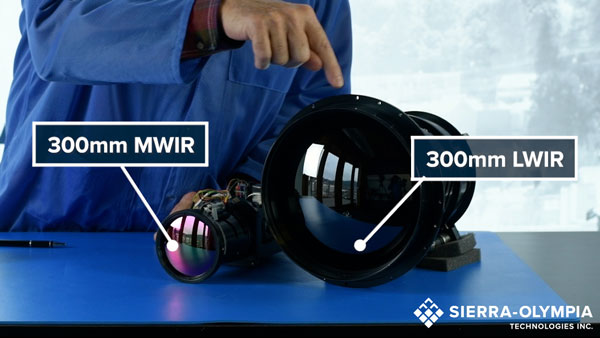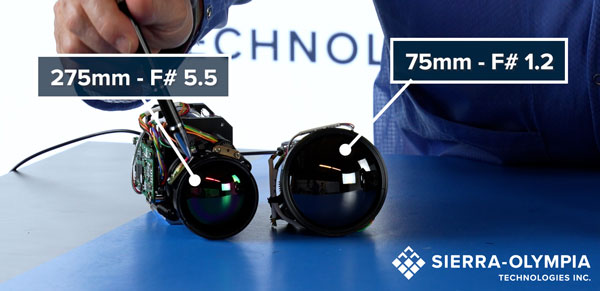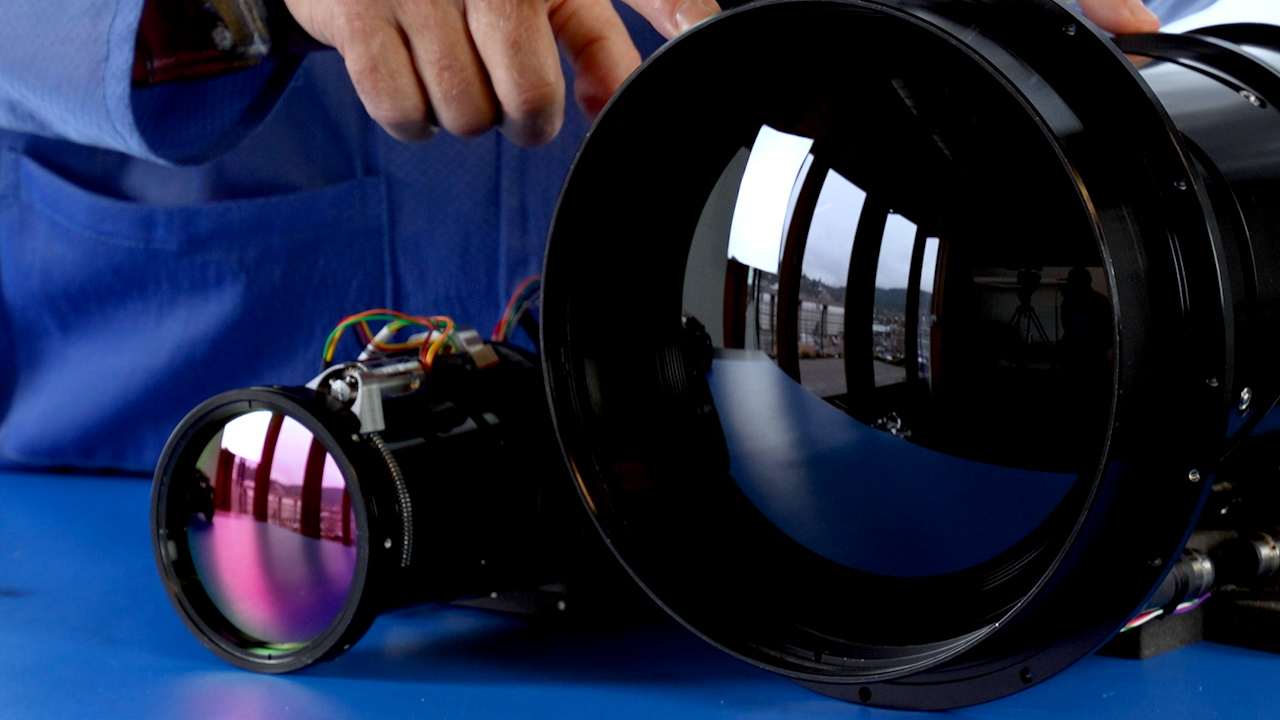Last modified on March 22nd, 2024 at 9:59 am
Part Two
In Part One of our F# blog series we talked about the generalized principles of F#. In Part Two we will continue to talk about the impacts to designers of infrared cameras with regards to F#. If you’re unfamiliar with the concept of F#, check out Part One.
The principle of F# has to do with basic math in optics. The diameter of an optic is equal to the focal length of an optic over the F#. Think about the focal length 100 millimeters or 200 millimeters, and then the F# is in the denominator of that equation. Therefore, when your F# goes up, the diameter will go down.
Trading Size Weight and Power for Capability
What we have here on the tabletop are two, 300 millimeter lenses. They’re both zoom cameras at their maximum focal length, 300 millimeters. The one on the left is a LWIR, F# 1.5, 300 millimeter optic. The one on the right is a MWIR, 300 millimeter, F# 4 optic. The higher the F#, the smaller the optic. That’s what you see in our example. The ratio between F# 1.5 and F# 4 can be summarized as the diameter of the two front elements. The aperture is related to the focal length and the size and the diameter of the aperture.

The lens on the left in Figure A weighs about 1 kilogram. The lens on the right weighs about 10 kilograms. When you start putting heavy optics driven by F# into a system, everything else gets heavier. We need more aluminum, we need bigger motors. We need everything about this to size appropriately. And what that adds up to is weight. This F# 4 mid wave system is possible for flight, whereas we wouldn’t probably consider this for an airborne application. It being so large, only 300 millimeters and ten kilograms. It’s to much of a power to weight trade off to lift the 10 kilogram optic off the ground.
Seeing Long Distances with a Smaller Camera
Another example of F# is in Figure B. These are both similar sizes. The camera on the right is a 75 millimeter F# 1.2. It is still larger than the camera on the left which is 275 millimeter F# 5.5. Even though the size of these cameras is similar, one is going to see much further because of its 275 millimeters lens. The 75 millimeter lens is appropriate for the long wavelength sensor that goes behind it. With mid wave sensors, we can drive our F#s up and see much further. These are simple examples of the effect of F# as it relates to weight, as it relates to the diameter of the of the front element of an optic.

Overall size and performance there are dozens of layers underneath the simple concept of F#. We’ll talk about these in future ask an experts. Thank you for reading and make sure to follow us on Linkedin and YouTube.

